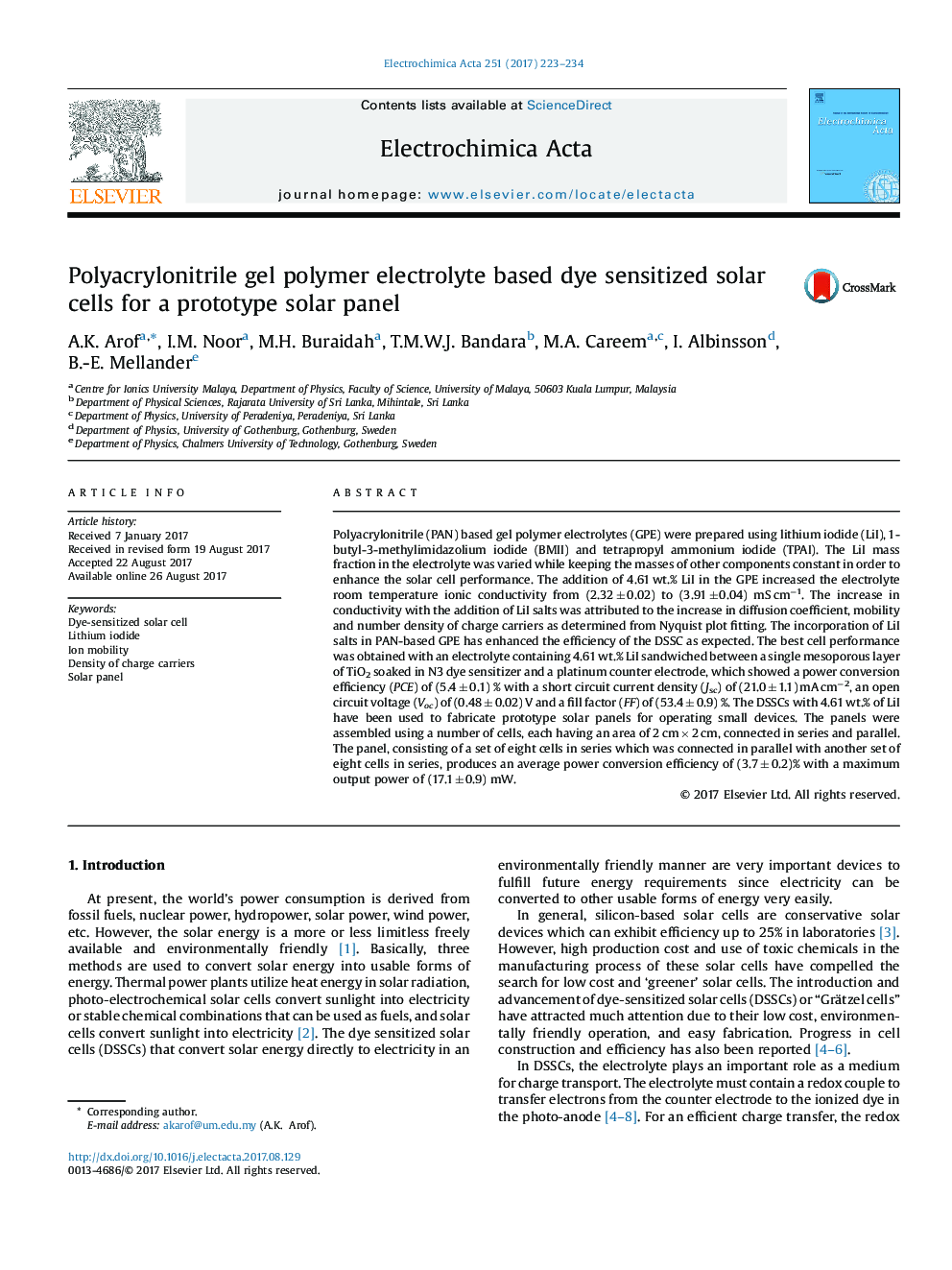| کد مقاله | کد نشریه | سال انتشار | مقاله انگلیسی | نسخه تمام متن |
|---|---|---|---|---|
| 6469899 | 1424106 | 2017 | 12 صفحه PDF | دانلود رایگان |
- Gel electrolyte with tertiary iodide salts used in DSSC application.
- Mobility and charge density influence electrolyte conductivity.
- Compared to a single cell, panel has higher series resistance and lower shunt resistance.
Polyacrylonitrile (PAN) based gel polymer electrolytes (GPE) were prepared using lithium iodide (LiI), 1-butyl-3-methylimidazolium iodide (BMII) and tetrapropyl ammonium iodide (TPAI). The LiI mass fraction in the electrolyte was varied while keeping the masses of other components constant in order to enhance the solar cell performance. The addition of 4.61 wt.% LiI in the GPE increased the electrolyte room temperature ionic conductivity from (2.32 ± 0.02) to (3.91 ± 0.04) mS cmâ1. The increase in conductivity with the addition of LiI salts was attributed to the increase in diffusion coefficient, mobility and number density of charge carriers as determined from Nyquist plot fitting. The incorporation of LiI salts in PAN-based GPE has enhanced the efficiency of the DSSC as expected. The best cell performance was obtained with an electrolyte containing 4.61 wt.% LiI sandwiched between a single mesoporous layer of TiO2 soaked in N3 dye sensitizer and a platinum counter electrode, which showed a power conversion efficiency (PCE) of (5.4 ± 0.1) % with a short circuit current density (Jsc) of (21.0 ± 1.1) mA cmâ2, an open circuit voltage (Voc) of (0.48 ± 0.02) V and a fill factor (FF) of (53.4 ± 0.9) %. The DSSCs with 4.61 wt.% of LiI have been used to fabricate prototype solar panels for operating small devices. The panels were assembled using a number of cells, each having an area of 2 cm Ã 2 cm, connected in series and parallel. The panel, consisting of a set of eight cells in series which was connected in parallel with another set of eight cells in series, produces an average power conversion efficiency of (3.7 ± 0.2)% with a maximum output power of (17.1 ± 0.9) mW.
Journal: Electrochimica Acta - Volume 251, 10 October 2017, Pages 223-234
